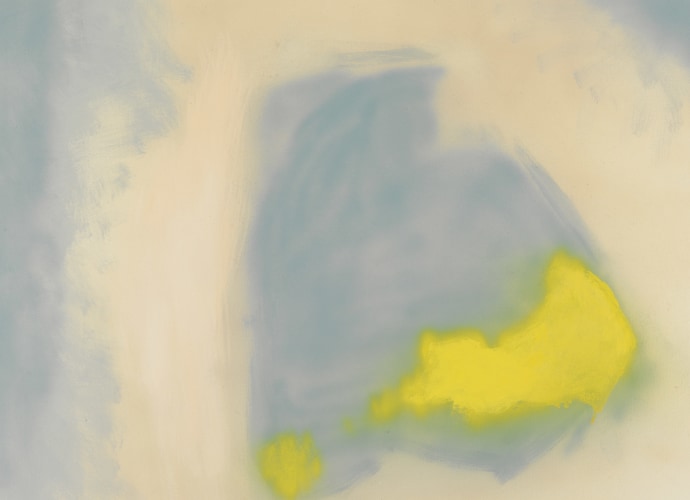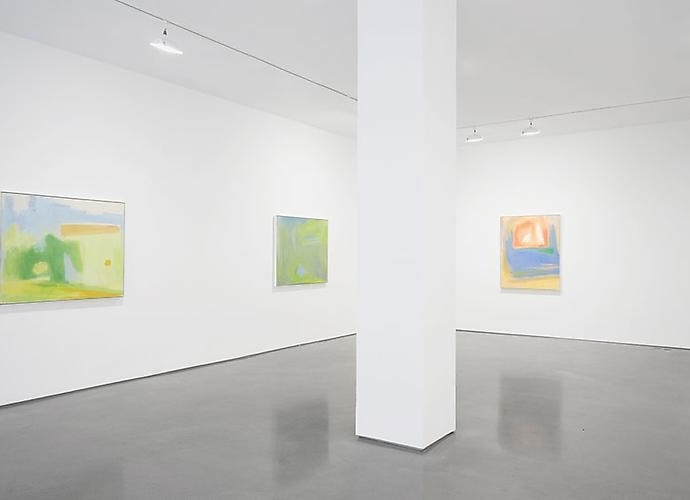
Esteban Vicente
Review by Donald Kuspit
Artforum, March 2013

By: Donald Kuspit
Esteban Vicente died in 2001, having lived to the ripe age of ninety-seven and worked to the end. It was not a bitter end, as his last paintings – thirteen of which were on view in this exhibition – indicate. Made between 1998 and 2000, these bright, colorful abstractions were inspired by the artist’s garden in Bridgehampton, New York, where he lived and worked. Among the flowers he planted were phlox, helianthus, foxgloves, daisies, and morning glories, all apparently in great abundance and carefully cultivated. Registering the effect of sunlight hitting the blossoms, the paintings are a sort of tachistic patchwork of quietly lyrical, atmospheric hues, sometimes amorphously spreading, sometimes striking and concentrated, like the red patches that suddenly appear as spontaneous accents in "Untitled," 1999. We are a long way from the scene in Arshile Gorky’s "Garden in Sochi," 1942, with its tragic, morbid undertone and sinister, aggressive handling. There is, rather, a hedonistic mellowness to Vicente’s paintings, said by art historian Sam Hunter to be derived from Willem de Kooning’s pre-Long Island expressionistic work – though they evince none of de Kooning’s anxiety and impulsiveness.
Vicente was not so much discharging feelings as reflecting on them – in this case, perhaps, his feelings of contentment. Exhibiting slow, deliberate, almost laconic brushwork, these works are elegantly relaxed, however much they may be “action paintings.” Vicente’s flat handling and his expanses of color suggest that he was influenced by Helen Frankenthaler’s “stained” paintings of the early 1950s; Frankenthaler, after all, also attempted to distill the sensuous essence of a landscape. Her canvases, however, are grander than Vicente’s impressions of his garden and less content with life.
Vicente once shared a studio with de Kooning, and like his East Hampton neighbor, he was taken with the Long Island light and landscape. Vicente, however, focused on a hortus conclusus rather than on the sweeping, open space of the shore. The air of tranquility in Vicente’s paintings – even in "Storm," 1999, with its flashes of orange on a soft purple ground – contrasts with de Kooning’s work, which is always retained, if in modified form, a Sturm und Drang. Long Island, with its expanses of beachfront, has a long history as a place of retreat and refuge from turbulent, unnatural New York City. Depictions of its landscape are traceable back to the late-nineteenth century Impressionist visions of William Merritt Chase. But more than those of Chase and de Kooning, Vicente’s paintings seem to confirm Edmond and Jules de Goncourt’s 1855 suggestion that landscape will become “the Easter of the eyes…when nature is condemned to death.”
